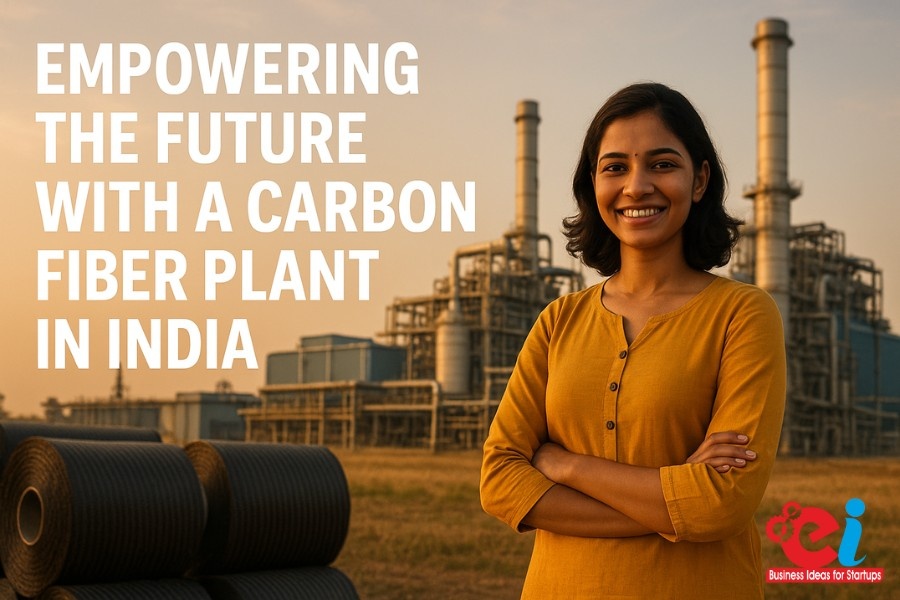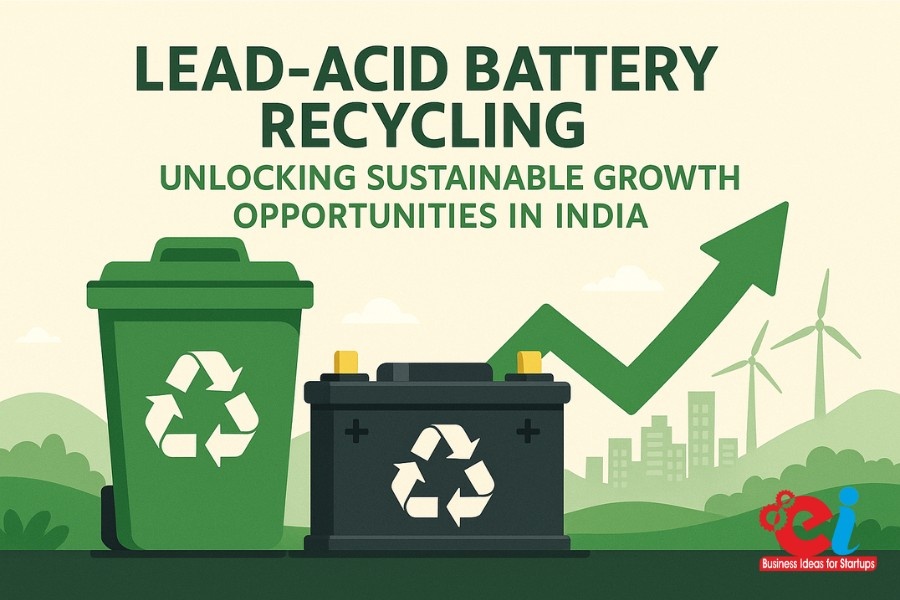As the country’s focus shifts towards advanced materials manufacturing, the attention is now on carbon fiber plant, arguably the most high-performance material with literally the best strength-to-weight ratio. Carbon fiber is an important material for aerospace, defense, automotive, wind energy, and even sports equipment industries. As part of the self-reliance drive under Make in India and Atmanirbhar Bharat initiatives, India aims to become self-sufficient. In this context, the setting up of a carbon fiber plant in the country will not only be of economic benefit, it is essential for building national infrastructure.
This guide will help you set up a carbon fiber plant production facility in India. It explains the nuances in terms of land selection, required licences, environmental clearances, legal policy, business setup norms and other central policies. With expert counsel from NIIR Project Consultancy Services (NPCS), the forerunners of industrial project consultancy in India, you will understand everything needed to set up and succeed in the carbon fiber venture.
1. Understanding Carbon Fiber: Relevance in the Market and Its Uses
What is Carbon Fiber?
A carbon fiber is a material made from carbon atoms that are bonded together with long chains. It’s among the low density, and high strength materials. It is made from a precursor like polyacrylonitrile (PAN), pitch or rayon. More than 90% of carbon fiber is produced from PAN, thus its called PAN based carbon fiber.
Uses Of Carbon Fiber
- Aerospace: Parts of aircraft, fuselage, and wings
- Defence: UAVs, missile structures, ballistic vests
- Automotive: Parts of high-performance vehicles
- Wind Energy: Blades of turbines
- Construction: Bridges, buildings, reinforcement
- Medical: Prosthetics, and orthopedic implants
Market Potential
In 2022, the worldwide market was more than $4.8 billion US dollars. It is projected to reach $9.7 billion by 2030, expanding at 9.6 percent over the years.
India is expected to rise with:
- Self-reliant defense and aerospace initiatives
- The trend of lightweighting in electrical vehicles
- Infrastructural innovations using carbon fiber reinforced polymers (CFRP)
2. Why Invest In India For Carbon fiber plant ?
Strategic Importance
- It is marked by India as a material of strategic importance and critical.
- There is limited domestic production, and most of the requirements are imported from ISRO, DRDO, HAL, and Tata Advanced Systems.
Government Incentives
- PLI Scheme for Advanced Chemistry Materials
- Make in India & Startup India programs
- Defense material innovation grant from the DRDO Technology Development Fund (TDF)
- Capital subsidies and R&D support from state government
Bankable feasibility studies of carbon fiber plants, including data on market demand, licenses, compliance norms, and technical investments, are provided by NPCS.
3. Area and Type of Lands Needed
Land Types
- Minimum Area Required: 5 to 15 acres (scale and integration level)
- Preferred Placement: Industrial corridors, SEZ or MIDC zones
Acreage needed for different capacities:
| Capacity | Acreage Needed |
| 200 TPA | 5 acres |
| 1000 TPA | 10–12 acres |
| 3000 TPA + R&D | 15–20 acres |
Key Locations
- Gujarat (Dahej, Sanand): Petrochemical Access
- Karnataka (Bengaluru): Advanced Tech Ecosystem
- Maharashtra (Pune, Nagpur): Defense and Electric Vehicle Hubs
- Chennai (Sriperumbudur): Aerospace and Automotive Hub
- Telangana (Hyderabad): Defence Production Cluster
Key Infrastructure Needs
- Uninterrupted Power Supply: 200–1000 kVA
- Industrial Water Connection
- Wastewater Treatment Plant and Effluent Treatment Plant (ETP)
- Gas Pipelines (if PAN precursor synthesized on-site)
- Hazardous Material Storage License
Related: Projects on Carbon Fiber Carbon Fiber Composites Graphite Fibre and Carbon Fiber Reinforced Polymer Investment Opportunities
4. Licenses and Clearances
A. Statutory Registration
- Company or LLP Incorporations
- Udyam MSME registration (If Relevant)
- Goods and Services Tax (GST) Registration
- Import Export Code (IEC)
B. Industrial Clearance Commands
- IEM bypass DPTIT (If funding surpasses a border)
- Environmental Authorization – defined EIA Notification, 2006 (Agi or Bi depending on factory size)
- Consent to Establish and Operate Supreme Court Petitioner Bureau
- Factory License under The India Factory Act, 1953
- Registration of Hazardous Waste Management
C. Additional Authorizations Pertaining to Carbon Fiber
- Explosive and flammable substances license – in the event of using solvents such as acrylonitrile or methyl acrylate
- Approval from MoD – when the case is for defense manufacturing
- Clearance from Atomic Energy Regulatory Board (AERB) – when radiation-curing or other research elements are involved
- Clearance from AERB – for patent on IP PAN precursor or spinning technology
NPCS offers complete documentation on all legal formalities, including forms, correspondences, and relationships with decision-making bodies.
5. An Overview of the Carbon Fiber Manufacturing Process
Describes the multiple steps in the PAN based carbon fiber manufacturing process:
Key Process Steps
- PAN Precursor Polymerization: Acrylonitrile and Methyl acrylate with comonomers undergo polymeration
- Wet Spinning: Fibers of PAN polymers are spun utilizing a coagulation bath into PAN
- Stabilization: Fibers are air heated at 200–300°C to stabilize
- Carbonization: Heated in an inert environment (1000–1500°C) to remove all non-carbon atoms
- Graphitization (Optional): Align carbon structure through extra heating (2000–3000°C)
- Surface Treatment and Sizing: Bonding treatment with oxidizers and subsequent coating with epoxy sizing is performed
- Spooling & Packaging
Machinery Needed
| Equipment | Purpose |
| Polymerisation reactor | Synthesis of PAN |
| Wet spinning machine | Form fibers |
| Stabilization oven | Oxidation of PAN |
| Carbonization furnace | Transform PAN into carbon fiber |
| Surface treatment unit | Prep for chemical bonding |
| Sizing coating line | Bonding with epoxy/resin |
| Winding & spooling machine | Final collection |
NPCS provides access to worldwide suppliers of carbon fiber equipment, including businesses in Japan, Germany, South Korea, and the USA.
6. Environmental Compliance and Safety
Major Environmental Aspects
- VOC (volatile organic compound) emissions from solvents
- Noxious fumes during carbonization
- Thermal and chemical effluents
Mitigation Systems
- Control units and scrubbers for VOCs
- Closed-loop waste solvent recovery
- ZLD systems or zero liquid discharge systems
- Fireproof reactor lining
- Radiation shielding for high energy processes
Compliance with MoEF&CC and Hazardous Waste Rules CPCB guidelines of Hazardous Waste also.
7. Financial Viability and Project Cost Estimates
Profitability Forecast for 1000 TPA unit
- Unit Selling Price: ₹1,400–₹2,000/kg
- Gross Revenue: ₹145–₹200 crore per year
- EBITDA Margin: 16–23%
- Break Even: 3–4 years
- ROI: 24% to 30%
NPCS provides pitch decks for equity investors along with models for cash flow and projected DSCR and syndicated loans.
Related: Increasing Demand of the Business of Carbon Nanotubes
8. Government Incentives and Support Schemes
Central Incentives
- PLI Scheme for Advanced Materials
- DRDO Technology Development Fund (TDF)
- NSIC raw material support for MSMEs
- Tax holidays for manufacturing in backward districts
State Incentives
- Capital subsidy
- 100% SGST reimbursement
- Stamp duty exemption
- Power tariff subsidy
NPCS facilitates the alignment of your projects with relevant subsidies and state schemes alongside crafting central and state proposals.
9. NPCS: Step-By-Step Procedures
To assist clients in establishing a carbon fiber plant production , NIIR Project Consultancy Services provides comprehensive support, consisting of:
- DPR with financials
- Market Survey & Demand Forecast
- Licensing & Legal Compliance
- Guidance: Plant Layouts and Process Flow Charts
- Raw Material & Machineries Vendor Information
- Subsidy, Funding, and Investor Procurement
- Complete Project Management
Final Statements
Setting up a carbon fiber plant in the country requires extensive research as a modern business in India, however, it offers unparalleled advantages beyond mere profits. Carbon fiber serves as the primary component of advanced technologies spanning a vast range of sectors such as defense, space, and renewable energy. The investment made stands to gain considerable returns in the long term, especially at a time when India is consolidating its position as a global leader in material science.
If you have the land, the required licenses, the technology, and experts like NIIR Project Consultancy Services to guide you, then you can become a leader in India’s carbon fiber revolution.
The right moment to invest in carbon fiber composites is now, so start your journey towards these goals today!

























